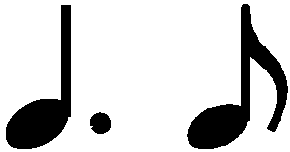



Rhythm
|
b. 26
|
composition: Op. 30, Mazurka in D♭ major
..
None of the sources bears traces of changes here, which makes it impossible to determine its cause. A mistake seems more likely in FC – it is easier not to write a dot and a beam than to write them without any reason. However, this does not discredit the version of FC, since Chopin could have changed the rhythm in [A], reviewing it before handing it over to Fontana. In the main text we give the rhythm of FC, being the principal source; however, we regard the version of FE as equal. category imprint: Differences between sources issues: Dotted or even rhythm |
|||
|
b. 40
|
composition: Op. 30, Mazurka in D♭ major
..
Both versions may be authentic – Chopin would write groups of small notes both as occupying a certain part of the bar and beyond the bar, cf., e.g. the Concerto in F minor, Op. 21, II mov., bar 26 and 30-31 and 33. On the other hand, one of them may be erroneous, but it is not so important in this context, since a difference in notation does not significantly influence the performance. In the main text we suggest a minim due to a possibility of a correction by Chopin in FE (→EE). category imprint: Differences between sources issues: Authentic corrections of FE |
|||
|
b. 55
|
composition: Op. 30, Mazurka in D♭ major
..
The third beat in the L.H. part remained unfilled in FC. In GE a crotchet rest was inserted here; however, the FE (→EE) version shows that it was a g-b category imprint: Differences between sources issues: GE revisions , Errors of FC |
|||
|
b. 55
|
composition: Op. 30, Mazurka in D♭ major
..
In the main text we give the FC (→GE) version. Although in analogous bars 49, 51 and 53 the second note is a semiquaver, the g2 quaver does not seem to be a mistake – together with the e2 note (prolonged due to the fact that it was played before), it is the quaver that constitutes an augmented version of the dotted rhythm opening the motif ( category imprint: Differences between sources issues: Errors in FE , Dotted or even rhythm |
|||
|
b. 59
|
composition: Op. 30, Mazurka in D♭ major
..
In FE, in the top voice the double dotted crotchet is followed by a quaver. A comparison with analogous bar 63, and above all the FC (→GE) version, prove that the value of the last note is erroneous, since it is to be a semiquaver. An adequate correction was introduced in EE. category imprint: Interpretations within context; Differences between sources issues: EE revisions , Errors in FE , Rhythmic errors |

 1 in
1 in  ). This rhythmic extension also impacts the next bar, which opens with a minim, and not with a crotchet. The semiquaver in
). This rhythmic extension also impacts the next bar, which opens with a minim, and not with a crotchet. The semiquaver in